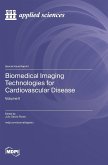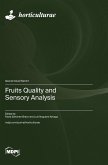Over the years, the development of several brain imaging techniques has provided new tools for capturing information about the structure and functions of the brain, which have proven useful in different fields, such as neurosurgery, neurology, and cognitive science. In particular, electroencephalography (EEG) has become a powerful instrument successfully employed in both clinical applications and cognitive neuroscience, since it is a non-invasive, easy-to-use, portable, and relatively low-cost tool. EEG is used for detecting and classifying a spectrum of neurological disorders, including epilepsy, sleep disorders, traumatic brain injuries, psychiatric conditions, and neurodegenerative diseases like Alzheimer's and Parkinson's. In summary, the processing and analyzing of EEG signals can be conveniently exploited to detect abnormalities in the case of a pathological state and improve the early diagnosis of brain diseases. This reprint contains studies regarding the application of EEG signal analysis in disease diagnosis, covering different processing methods and several neurological disorders (Parkinson's disease, stroke, epilepsy, and sleep disorders).
Hinweis: Dieser Artikel kann nur an eine deutsche Lieferadresse ausgeliefert werden.
Hinweis: Dieser Artikel kann nur an eine deutsche Lieferadresse ausgeliefert werden.








